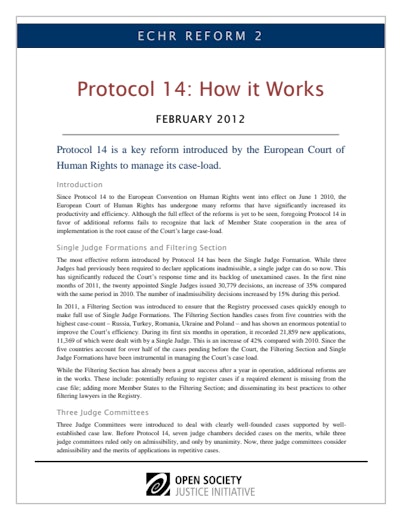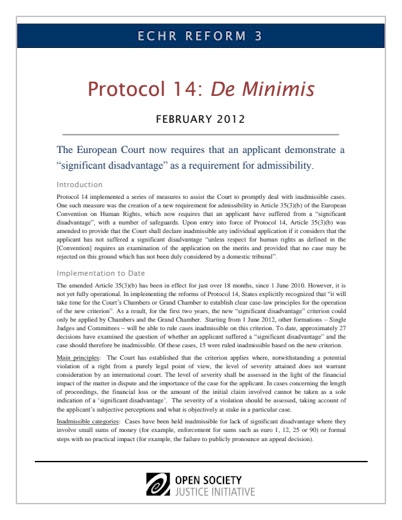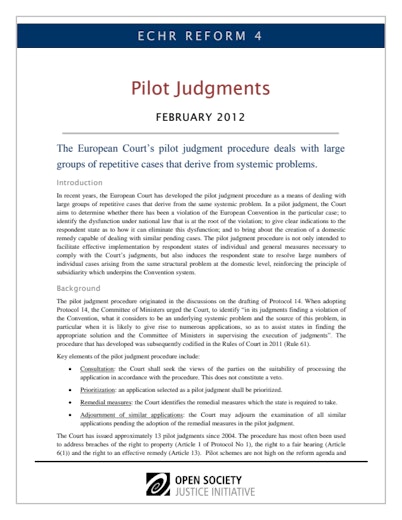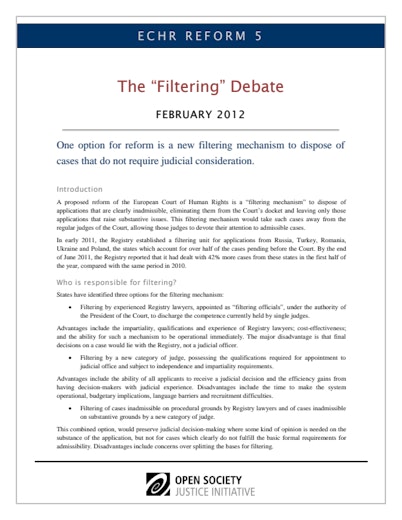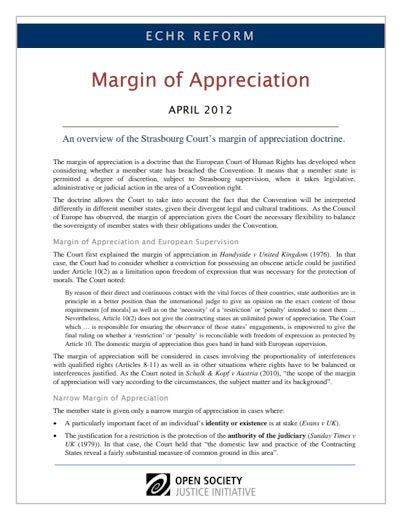Fact Sheets: Reform of the European Court of Human Rights
The 47 members of the Council of Europe are again considering reform of the European Court of Human Rights, with a draft declaration on reform on the agenda of a conference in Brighton, England, running from April 18 to April 20.
In order to encourage the widest possible involvement in this debate on the future of the world's leading human rights court, the Open Society Justice Initiative has prepared a series of fact sheets summarizing the main issues under discussion. Please click below to read fact sheets on:
1. Protocol 14: How It Works. Introduced in June 2010, this amendment to the European Convention of Human Rights contained measures aimed at improving the court's ability to manage its caseload.
2. Protocol 14: De Minimis. A look at steps being implemented under the latest reforms to prevent trivial cases from taking up court time.
3. Pilot Judgments. By ensuring that a single "pilot" judgment is properly implemented, the court is seeking to resolves similar, repetitive complaints from other applicants.
4. The "Filtering" Debate. The court set up a filtering unit in 2011 to weed out inadmissible applications from Russia, Turkey, Romania, Ukraine and Poland, but there are concerns that further filtering could obstruct substantive applications.
5. Margin of Appreciation. A introduction to the doctrine that allows the Court to take into account the fact that the Convention will be interpreted differently in different member states.
Topics
- Climate Justice
- Digital Rights and Fair Elections
- Discrimination and Racial Justice
- International Crimes
